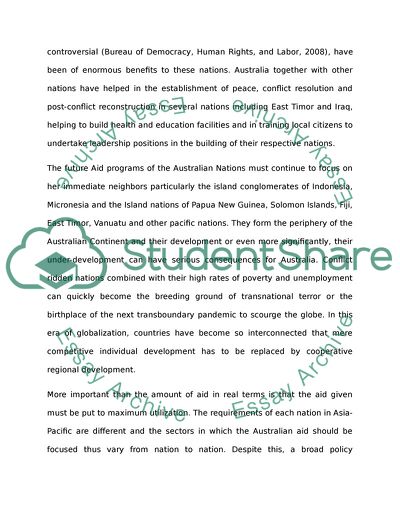Cite this document
(Where should Australian foreign aid be focused Case Study, n.d.)
Where should Australian foreign aid be focused Case Study. https://studentshare.org/politics/1714416-where-should-australian-foreign-aid-be-focused
Where should Australian foreign aid be focused Case Study. https://studentshare.org/politics/1714416-where-should-australian-foreign-aid-be-focused
(Where Should Australian Foreign Aid Be Focused Case Study)
Where Should Australian Foreign Aid Be Focused Case Study. https://studentshare.org/politics/1714416-where-should-australian-foreign-aid-be-focused.
Where Should Australian Foreign Aid Be Focused Case Study. https://studentshare.org/politics/1714416-where-should-australian-foreign-aid-be-focused.
“Where Should Australian Foreign Aid Be Focused Case Study”. https://studentshare.org/politics/1714416-where-should-australian-foreign-aid-be-focused.


